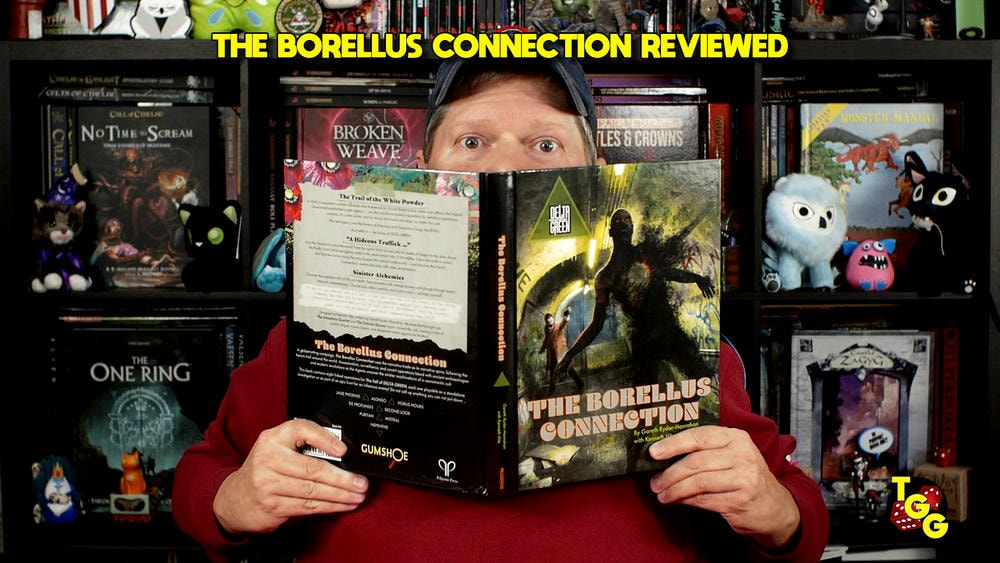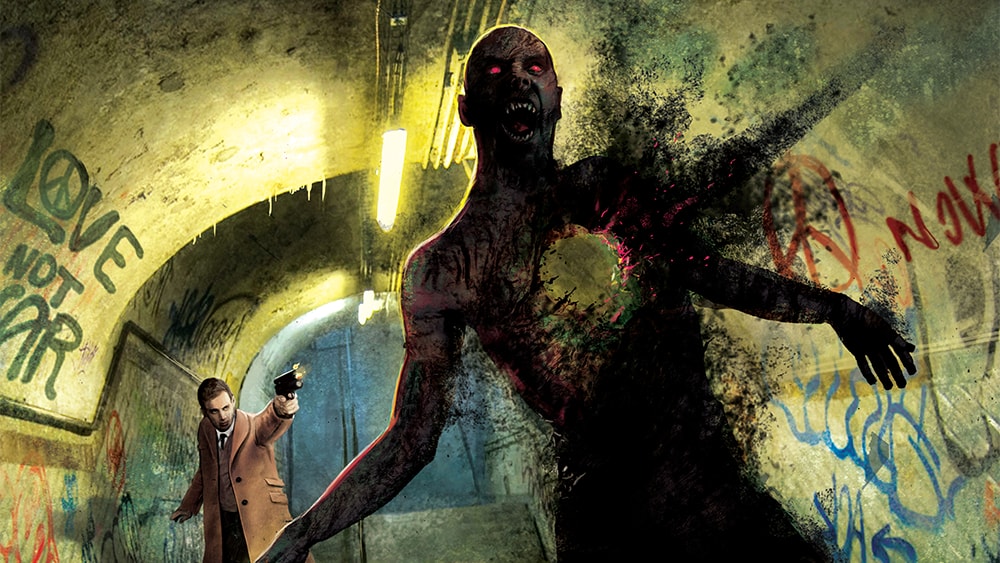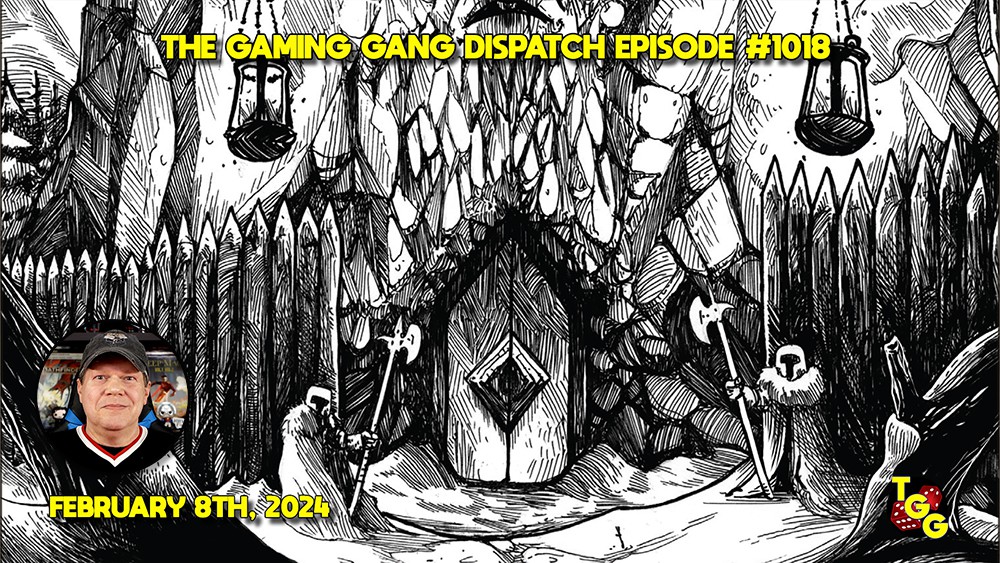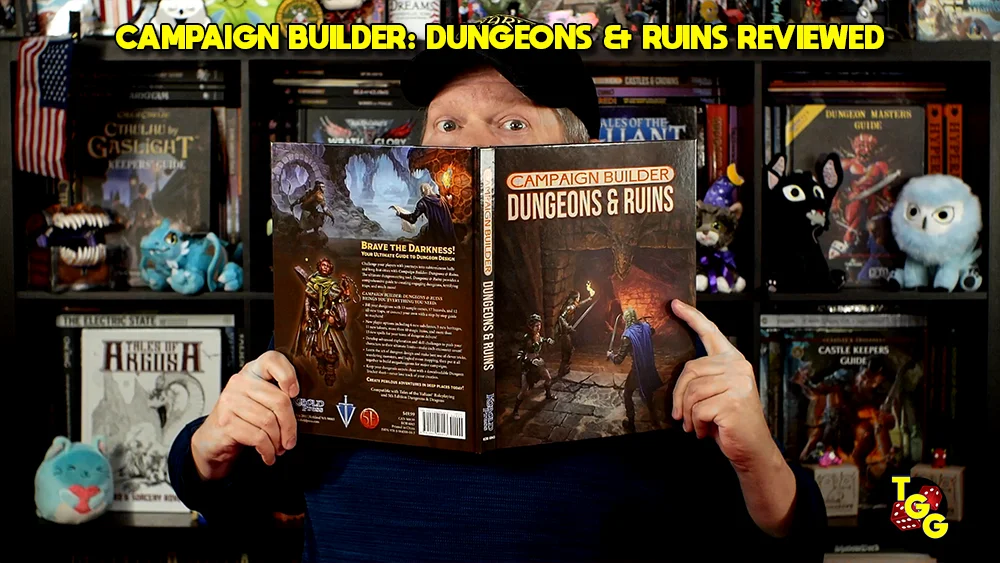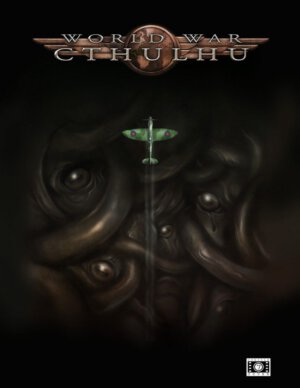
Publisher: Cubicle 7 Entertainment
Authors: Dominic McDowall-Thomas, Gareth Ryder-Hanrahan, Jason Durall, Stuart Boon, Martin Dougherty, and Ken Spencer
Artists: Jon Hodgson, Paul Bourne, Scott Neil, Scott Purdy, and Steffon Worthington
Year: 2013
Players: It’s an RPG so best with 3 or more
Ages: 14+ (my guess based on the subject matter)
Playing Time: Ongoing
Pages: 216 pages
Price: Hardcover $39.99, PDF $19.99 (at DriveThruRPG)
Genre: Lovecraftion Mythos adventure set during World War Two
There’ve been plenty of horror RPGs over the past few years set during World War Two and that may lead some to question if Cubicle 7’s entry into the WWII/Cthulhu Mythos is really necessary. Keep in mind Achtung! Cthulhu hit the scene not long ago so it’s understandable if folks out there might be wondering how World War Cthulhu stands up against the Modipheus series or if the Cubicle 7 book is worth picking up if they already have A!C. Remember the Call of Cthulhu core rules are required to use either system.
Let me emphatically state if you have any interest in running Lovecraftian adventures during World War Two then you need to add World War Cthulhu: The Darkest Hour (WWC) to your collection.
The setup for WWC is one in which the player characters will be operatives for a shadowy offshoot of the Special Operations Executive (or SOE) run by a mysterious official known only as “N.” N will be sending the operatives on special missions to further the Allied cause behind enemy lines while also engaging in supernatural or Mythos related investigations. The duel objectives of the players’ missions can make for some really entertaining roleplaying as Winston Churchill has called for the SOE to “set Europe ablaze” while N not only looks to use the operatives to further the war aims of the British government as well as do battle with supernatural and eldritch enemies. One nice touch WWC introduces is the possibility N may not be a bastion of light and right but an evil entity only looking to further his own nefarious plans; it’s up for the Keeper to decide.
World War Cthulhu breaks down into four major sections: The Introduction, Player Resources, Keeper Information, and a campaign titled The God in the Woods.

The player resources are what you’d expect from this section as rules for character creation are included as well as key changes to the core Call of Cthulhu character rules. Investigators in WWC will tend to be hardier and possess higher skills than the run of the mill CofC characters. These changes are put in place to increase the survivability of the characters and also accounts for additional training provided by the SOE. There are even rules for “aging up” CofC characters from the 1920s and 1930s to include them in the World War Cthulhu setting. It’s important to note World War Cthulhu is firmly entrenched in the Call of Cthulhu system of rules with some minor changes and additions. Most of these changes tend to provide the players with characters who are much more experienced and capable than a standard CofC character would begin a campaign.
One of the additions WWC brings to the table is the inclusion of personality. While the characters will continue to possess an occupation (and WCC adds a few new occupations to the mix) they also have an overall personality which should influence how they deal with objectives and obstacles during a game session. The character may be a Bruiser, Expert, Thinker, or Leader. These personalities don’t need to overly influence how a player takes the reins of their character but can provide for some Sanity benefits at the end of an adventure; a bruiser should look to tackle problems through force while a thinker might be more interested in outsmarting the opposition or seeing a problem as a puzzle to be solved through wits alone.
New skills are obviously introduced in World War Cthulhu, due to the setting, although the focus here is on covert action as opposed to characters driving tanks or devising grand battle strategies. One of the key aspects of WWC is the characters should avoid firefights and set piece battles as much as possible; organizing partisans behind enemy lines in Yugoslavia won’t be possible if the characters get blown away by the Germans the first time they encounter the enemy… This section concludes with details about covert actions and small arms tactics which will be of particular interest to players and Keepers alike. I was surprised the actual investigation side of adventures wasn’t dealt in more detail – military matters take up the great majority of page space – but this isn’t a glaring omission.
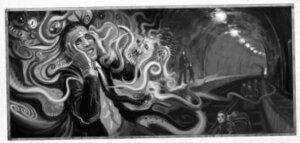
New rules are introduced covering such things as ambushes, snipers, suppressing fire and the like. What is missing are rules tackling armored vehicles or aircraft and I can certainly understand the omission since the players are operatives mainly working behind enemy lines and it’s highly unlikely they’ll be commandeering a Panzer or Focke-Wulf anytime soon. Plus, player characters will be better served by avoiding any entanglements with armor or aircraft. WWC has a very tight focus and everything in the book is directed toward portraying a dark and dire world where the players are outnumbered and outgunned at every turn.
An interesting new concept introduced in World War Cthulhu is Cover. Since the investigators will usually be operating behind enemy lines they’ll need to maintain cover stories to prevent arrest and possible execution. Cover acts a bit like the SAN score but is used for the whole group rather than individually. An initial cover score will be calculated and will increase or decrease depending on the characters’ actions as well as events within the adventure or campaign. The cover value can range from 0-99 and the Keeper may call for a cover check at points where the cover story could be blown. A success on the check means the investigators can continue along their current path of action where a failure might mean someone being brought in for interrogation or the enemy becoming more aware of the partisans operating in the area.
- SOLO BORG is Up for Crowdfunding on Kickstarter - Apr 11, 2025
- Dungeon Crawl Classics: Grave Robbers of Thracia to Land in Stores in May - Apr 11, 2025
- Score Big Savings on the Between Clouds Roleplaying Game - Apr 11, 2025



